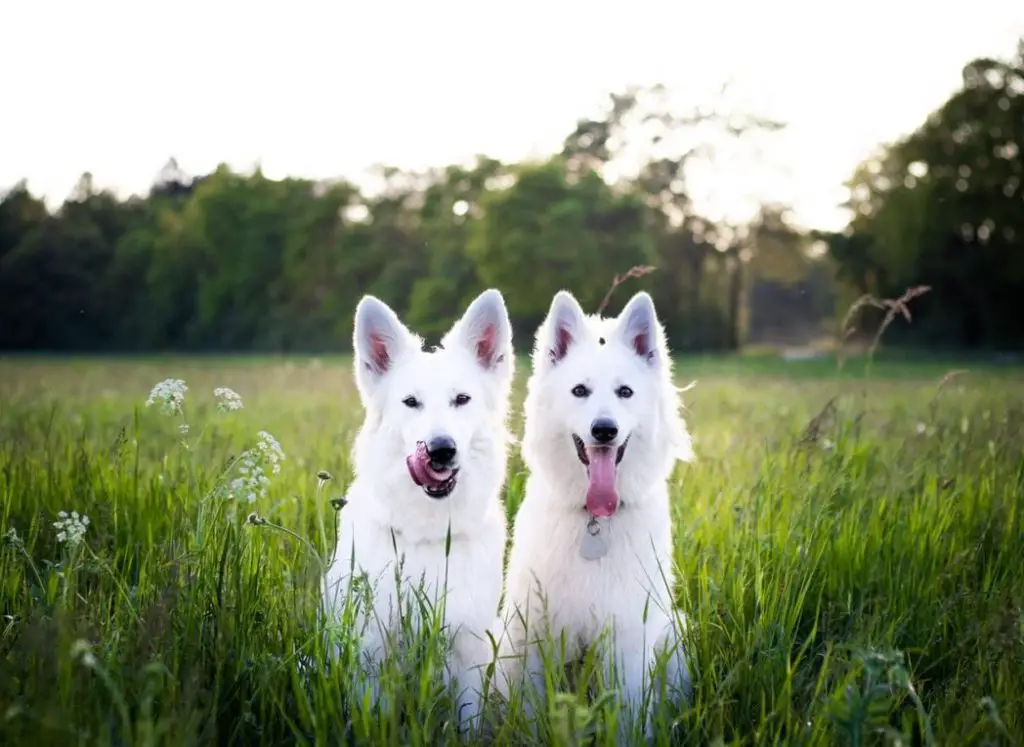Dog Grass Allergies (Causes & Treatments Revealed)
Taking your pup for a walk or run is good for their physical and mental health.
Equally, allowing them to savor a moment in the lush green playing field also seems to be a good idea.
Unfortunately, it seems that such activities can contribute to dog allergies with the main culprit being the grass.
I know dog grass allergy seems to be an unlikely occurrence, but it does occur.
Like all the other forms of dog allergies, grass allergy in dogs is an unpleasant experience and is often characterized by uncomfortable symptoms, which are difficult to relieve.
And if left untreated, the symptoms of dog grass allergies can exacerbate to more acute conditions.
Journey with us as we explore everything you need to know about dog grass allergies, including the allergy causes, diagnosis, treatment and prevention options.

Causes of Dog Grass Allergy
A common misconception among dog owners is that grass is the main cause of grass allergy in dogs, which is not surprising since the allergy revolves around the term grass.
In reality, however, the actual cause of the grass allergy in a dog is the pollen.
The grass pollen refers to the powdery yellow material produced by the male seed plants and is used for fertilization.
The pollen is characterized by microscopic grains and is transported from plant to plant by birds, bees or wind.
When these microscopic grains come into contact with your dog, they trigger an allergic reaction.
If your dog is fond of rolling in the grass as most pets are, and they happen to come into contact with the pollen, they are likely to sneeze and itch; an early indication of grass allergy.
It should also be observed that most of the grass usually blossom or rather pollinate during the months of May to July, meaning you`re likely to experience grass allergies in canines during this period.
- This period is also known as peak pollen season.
However, this does not rule out the chances of the allergy happening during any other time.
Read this article discussing the issue of dog saliva allergies in humans
How Pollen Come into Contact with Dogs
The tiny grass molecules come into contact with your dog through an array of means including:
- Inhalation of pollen.
- Absorption through the skin.
- Licking.
Again, with a large variety of grasses containing allergy-causing pollen, it`s important to realize that your dog does not necessarily need to come into contact with the grass to have an allergy.
The pollen can be spread through the air, or even brought into the house by owner or guest.
Having said that, however, it`s also important to mention that grass allergy among pooches can also arise as a result of other environmental contaminants in the grass such as dust, mold spores, and storage mites.
Symptoms of Grass Allergy in Dog
The symptoms and time of allergy manifestation of this allergy vary immensely from one dog to the other.
It all depends on a myriad of factors including the concentration of the pollen, sensitivity of your dogs’ organs among other factors.
Again, the severity of the grass allergy varies a lot on the breeds and may range from simple cough and sneeze to total hair loss.
Nevertheless, there are common symptoms that manifest across many of the dogs with grass allergies.
The below list is not conclusive, but it should paint a rough idea of what to expect.
Also, most of the grass allergy symptoms usually overlap with other allergies such as food allergy.
You should therefore, not rush into a conclusion before your dog undergoes a clinical examination.
The signs and symptoms include;
- Persistent coughing.
- Persistent sneezing.
- Watery eyes.
- Rashes.
- Hair loss.
- Hives.
- Crusty skin.
- Excessive Licking.
- Scratching.
In most cases, grass allergy in dogs is manifested in your dog`s head, face, armpits, feet, and abdomen.
Dogs suffering from grass allergy often gnaw and lick their paws.
Diagnosis of Grass Allergies among Dogs
If you are suspecting your dog has a grass allergy, you should visit your vet for your pup’s checkup.
Here, ensure that you provide your veterinary with all the relevant information regarding your dogs` health, including when they started behaving oddly.
Your veterinary may undertake different tests, starting with a general physical test.
During the physical test, the vet will assess the skin condition of your dog.
However, the general test still doesn`t cut, since the grass allergy might be confused with other skin conditions such as skin allergy or chronic dermatitis.
For a more conclusive report, they will initiate a skin test.
Serum Allergy Test
The serum allergy test is conducted by taking a blood sample of your dog and testing it under a microscope for signs of an allergic response.
If the test is positive, your vet will send you to a dermatologist to perform an intradermal allergy test.
Intradermal Allergy Test
Here, your dog is sedated, then the vet injects a little amount of the allergen.
In case there is an allergic response such as inflammation or redness in the injected area, the test is considered positive.
Treatment and Prevention of Dog Grass Allergy
Though you may not completely keep your dog from the grass, there are various steps that you can take to limit the pollen exposure to your dog.
Some of the steps include;
1. Mowing your lawn frequently and avoiding tall grasses
Cutting the grass is a good way of limiting your pup`s exposure to pollen.
2. Limit outdoor time during the peak pollen season
Yes, as we had earlier mentioned, grasses pollinate seasonally.
Therefore, keeping your dog indoors during the peak pollen season (late spring to early summer) can greatly help.
3. Wiping down your dog`s feet and legs
Most of the pollen in dogs is usually carried or transferred through their feet and legs.
The clingy pollen attaches itself to places where your dog makes contact with the grass.
Therefore, create a habit of wiping your dog’s feet with a towel soaked in warm water or using medicated wipes.
4. Using anti-itch sprays and vet-recommended shampoos
If your dog is already afflicted with the allergy, bathing your dog with veterinary-approved shampoos and anti-itch spray can help in relieving the symptoms and discomfort.
5. Antihistamine, and allergy shots
Allergy shots are done to boost your dog`s immunity against the allergy-causing pollen.
Conclusion
Grass allergies in dogs are quite common during the peak pollen season since pollen is the main cause of the allergy.
However, you can prevent your dog from contracting this allergy in a number of ways including using vet-recommended shampoos and sprays, as well as limiting outdoor time.
Can you use baby shampoo to wash your dog? Find out here
Also, be on the look-out for the grass allergy symptoms in your pup and seek medical treatment promptly, if you suspect a possible grass allergy.
Remember that some of its symptoms may exhibit a different health condition or allergic reaction.



